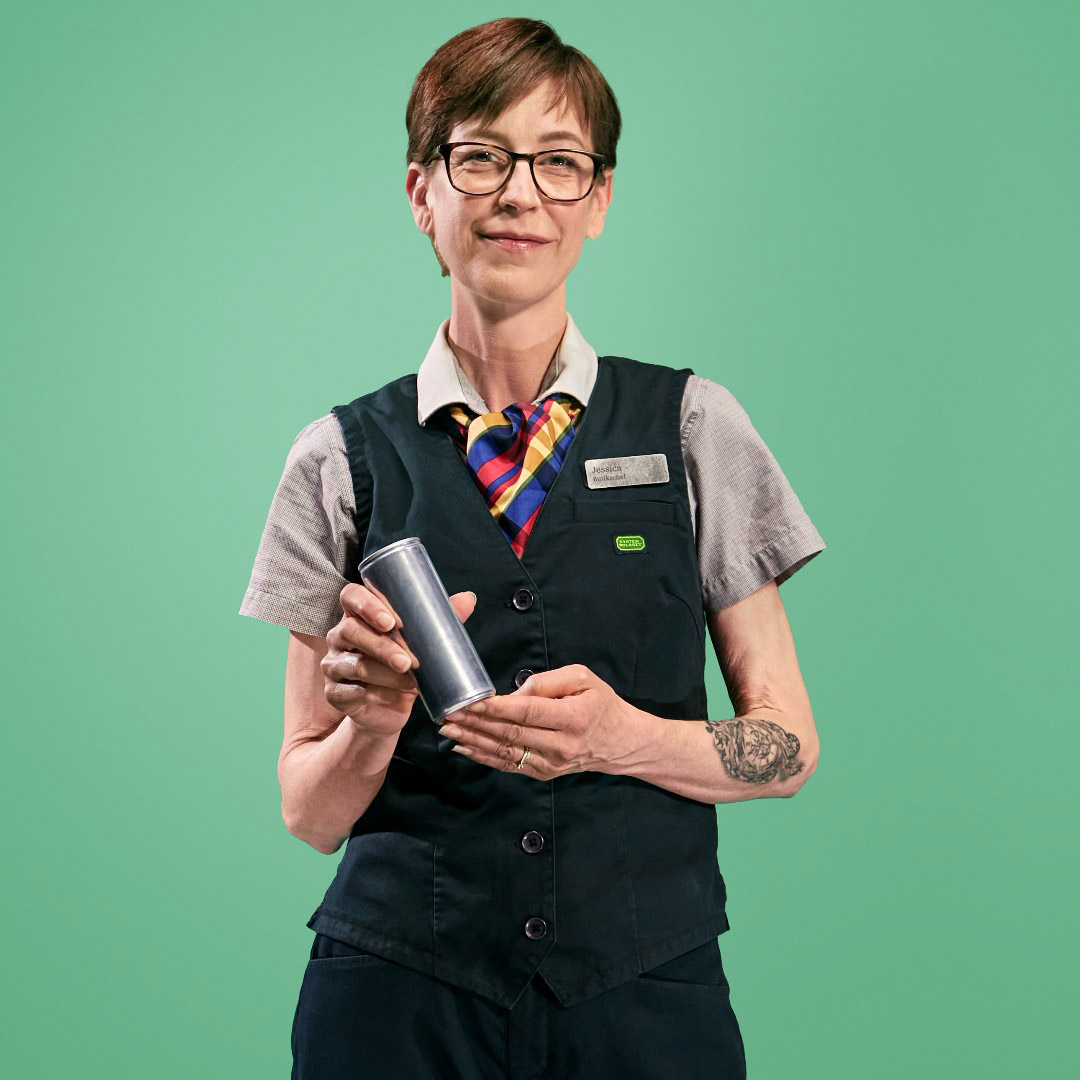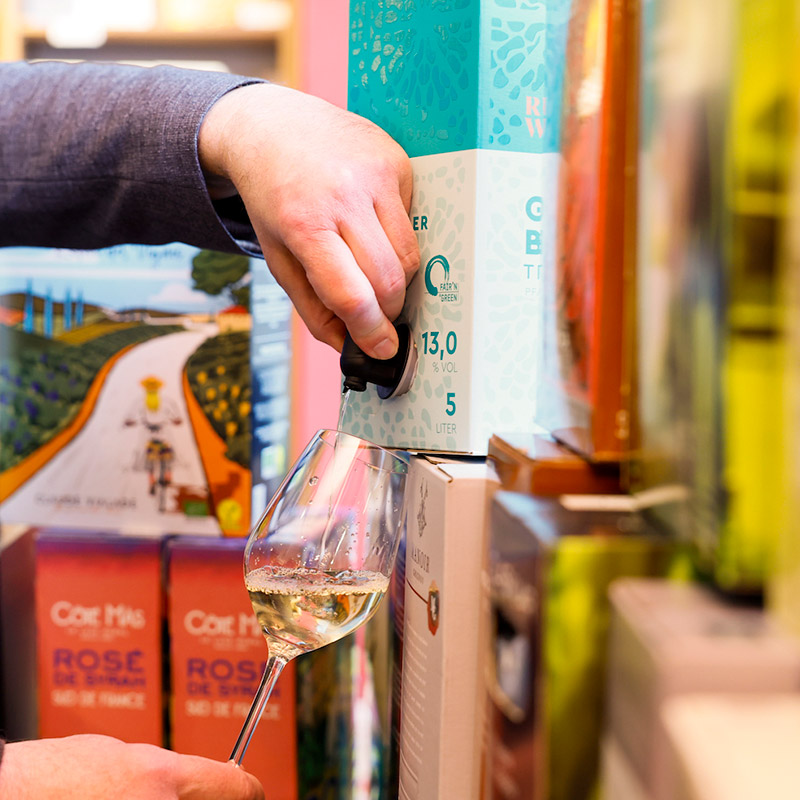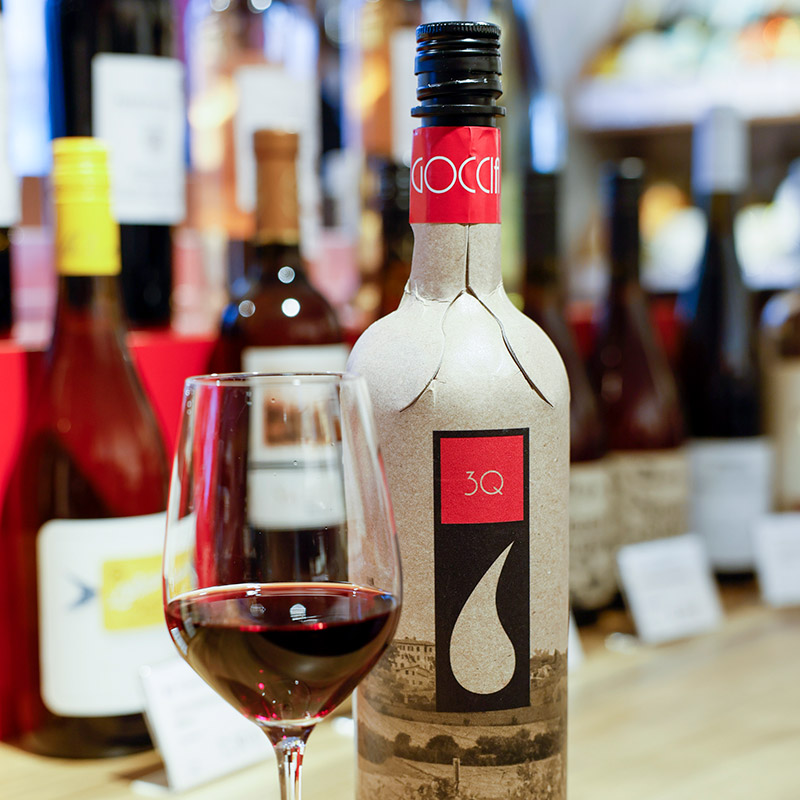Alternatives to glass bottles for wine have already become established in many countries. However, especially in German-speaking countries, retailers and winegrowers are putting on the brakes. However, bottles account for a large part of the CO2 footprint of wine production. Is the age of the glass bottle coming to an end?
Many studies prove this: The energy used to produce glass and transport bottled wine accounts for a large proportion of the CO2 footprint. Experts estimate the proportion to be around 40 per cent.
In order to make production and the wine trade more sustainable, there is therefore a need to develop alternatives to glass that are lightweight and, ideally, can be recycled. In the EU, 90 per cent of all wines, sparkling wines and spirits are still bottled in glass, which consumes 43 per cent of total glass production. Perfume and pharmaceutical products, on the other hand, only play a very minor role.
So will wine fans soon have to say goodbye to the glass bottle? Not for a long time yet, according to many retailers in German-speaking countries, i.e. Germany, Austria and Switzerland. Only just under half of them are prepared to introduce alternative containers. In other countries, on the other hand, almost every retailer wants to list wine in alternative packaging in the next two years. Why are these differences?
The Prowein Business Report 2022 investigated the reasons for this. Around 2,500 winegrowers, wine merchants, importers, distributors, restaurateurs and hoteliers from 16 countries were surveyed on the acceptance and planned market launch of six different alternative wine packaging formats. Over 70 per cent of them called for a reduction in the carbon footprint of wine. The report divides the countries into three groups:

These include the Scandinavian countries, Great Britain and Canada. Almost all retailers there are prepared to offer their customers alternatives to glass bottles. So-called "alternative packaging" is already an integral part of the product range there. The reasons given for this are as follows:
For example, the five Scandinavian alcohol monopolies (including Iceland and the Faroe Islands) have committed to a joint sustainability strategy with the specific aim of reducing CO2 emissions by 50 per cent by 2023.
The targeted listing of wine in packaging with a lower carbon footprint than bottles is part of the strategy to achieve this goal. To this end, the monopolies are now demanding alternatives to glass bottles from their suppliers. Bag-in-box is very popular in Scandinavia, in Canada it is cans. Innovative PET bottles in standard shapes such as Bordeaux or Burgundy are also on the way. Their quality has improved significantly in recent years and are now considered to be flavour-neutral, even when stored for long periods. They weigh barely 50 grams, do not break, are accepted by deposit systems and can therefore be almost completely recycled or reused. According to the survey, there are also good market opportunities for paper bottles. Producers therefore have a better chance of being listed in these countries if they can offer their wines and sparkling wines in alternatives to glass bottles - and thus utilise a competitive advantage.
This group includes France and Spain, two of the largest producer countries, as well as the USA, Belgium and Portugal. More than half of the retailers in these countries intend to offer wine in alternative packaging in the coming years. Here too, bag-in-boxes and cans dominate, followed by PET bottles, which are most popular in Portugal. In the USA, many respondents can also imagine refillable aluminium barrels for serving in restaurants ("kegs"). Paper bottles also have good market opportunities there.
Germany, Austria and Switzerland, as well as the Netherlands and Italy, are among the laggards. Here, the willingness of retailers to work with containers other than glass is below 55 per cent. In the German-speaking countries in particular, the majority of retailers continue to use glass bottles. Overall, however, every second retailer surveyed expects consumers to accept bag-in-box as a wine container. In Italy and the Netherlands, there is greater demand for cans.

Wine bottlers are often tied to their existing bottling lines by high investment costs. Their flexibility to fill wine into containers other than glass bottles is therefore limited. However, 69 per cent of them would offer alternatives if they were compatible with existing bottling lines.
However, due to the restrained demand from the trade for new containers in the latecomer countries, it is more difficult for many wine producers to achieve sufficiently large quantities for alternatives to glass economically. The current economic situation continues to result in lower or even negative margins, as cost increases cannot be fully passed on to the trade and end consumers. The willingness to invest in new bottling plants is therefore currently low, although two thirds of producers see the significant rise in glass and bottle prices as an opportunity to quickly introduce alternatives.
However, such investments require strong demand from retailers and long-term purchase guarantees, as is the case in the countries of the innovators. More than a third of respondents there are convinced that the majority of everyday wines will no longer be bottled in glass in the near future. In the laggard countries, more than half of those surveyed lack this confidence in the future of bottled alternatives.
According to the survey, the most important success factor for the introduction of lighter and more environmentally friendly wine containers is intensive communication with consumers. However, this will only succeed if retailers themselves are convinced of the prospects of success for alternatives to glass bottles, educate their customers accordingly and thus generate demand. However, concrete commitments to CO2 reduction, such as those introduced by the Scandinavian monopolies, also send an important signal to producers to invest and offer new products.

Jancis Robinson, probably the world's best-known wine writer, recently issued a call to bottle manufacturers to produce many more lightweight glass bottles: "Many a bottler and wine producer has reported difficulties in persuading glass bottle manufacturers to supply lighter bottles. There is a strong argument for bottle makers and the wine industry to work together to increase sales while reducing carbon emissions, and for the glass industry to listen to the needs of their key customers. At the moment they feel they have the wine producers in the palm of their hand. They can afford not to take their concerns into account. How many conversions from glass to cans, plastic bags in cartons and recycled plastic will it take to change their minds?"
As an alternative, a reusable system could also drastically reduce the carbon footprint of glass bottles. In Germany, glass manufacturer Verallia plans to launch a national reusable pool for 0.75-litre wine bottles for the first time in the first quarter of 2024. So far, there are already some initiatives - such as in Württemberg - at regional level, but not yet at national level. It should be possible to refill the bottles up to 50 times. According to the manufacturer Verallia, the deposit will be 50 cents per bottle in order to achieve a high return rate for existing deposit machines. The bottles are collected and processed in a central cleaning centre.
Whether plastic, paper, aluminium or glass, disposable or reusable: the most important thing for wine lovers should be the contents, not the packaging.
(al / Sources: Prowein Business Report; Weinwirtschaft, jancisrobinson.com, own research)